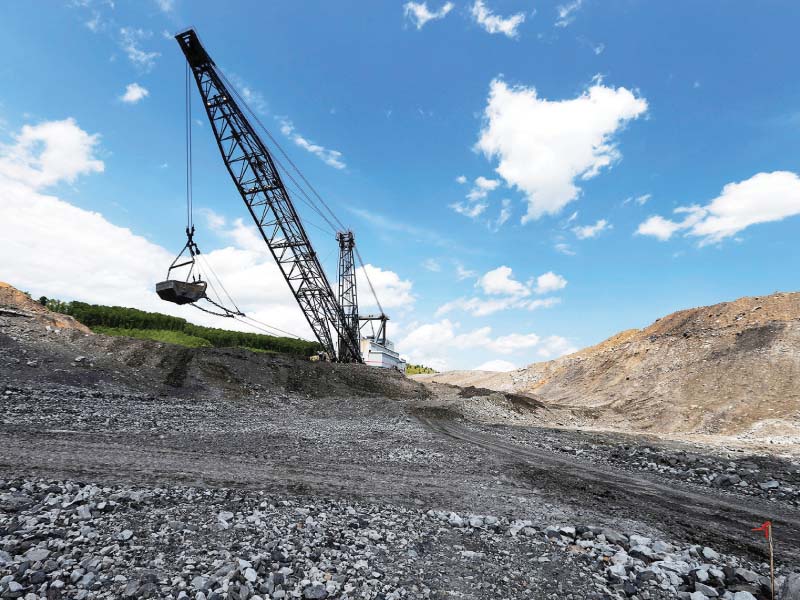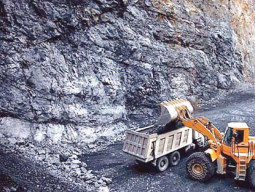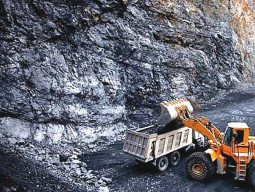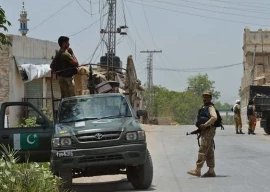
These three government bodies have separate workforces and offices. According to reports, the Sindh government spends millions of rupees every month for the operations of these bodies.
Previously, the Sindh Mines and Mineral Department was looking after the development of coal, along with other minerals, under the supervision of the federal government. After the discovery of huge coal reserves in the Thar Desert in 1992, the provincial government’s focus turned exclusively to Thar coal. This led to a separate body, Sindh Coal Authority, being formed in 1993. The authority’s singular focus was on development activities around Thar coal.
Thar coal starts power supply to national grid
In the meantime, the Mines and Mineral Department continued to work on issues relating to coal reserves, including coal mining at other locations. It also continued issuing coal mining licences in the province. The department follows the National Mineral Policy, 1995 in all affairs of minerals in the province, as Sindh still does not have its own mineral policy, even after full control on minerals, including coal, was transferred to it under the 18th Constitutional Amendment.
In 2008, the federal government, headed by then-prime minister Yousaf Raza Gilani, began planning to establish the Thar Coal Authority to undertake coal development activities in the Thar coalfield at the federal level. The federal government eventually withdrew the decision soon after the Sindh government strongly objected to it, arguing that coal was a provincial subject.
Subsequently, the Sindh government constituted another body, Thar Coal and Energy Board, for development of the Thar coalfield. At the same time, the provincial government left the Sindh Coal Authority untouched. Now, the province has three parallel bodies at government level working on coal affairs - the Mines and Mineral Department, Sindh Coal Authority and Thar Coal and Energy Board.
Later, the Sindh government transferred all coal-related functions and power from the Mines and Mineral Department to the Energy Department. Now the Energy Department is fully authorised with all powers pertaining to coal. The Energy Department is a full-fledged department, having a complete secretariat, administrative secretary and minister in-charge. It has also established three attached departments exclusively on coal, Directorate General of Coal Mines, Directorate of Coal Energy Development and Inspectorate of Coal Mines.
According to Sindh Energy Department’s website, its powers include “development of coal resources, grant of licenses, permits, leases and coal mining, regulation and monitoring of coal mining operations, collection of royalties, negotiations with private investors, import, purchase, distribution and price fixation of coal and coke”.
Interestingly, despite authorising all the functions and powers relating to coal, the provincial government has also kept intact its previous bodies, the Sindh Coal Authority and Thar Coal and Energy Board. They have separate staff and offices and the staff is getting hefty salaries and allowances. Their officers are also enjoying other facilities, including cars and monthly fuel allowances, which cost the Sindh government millions of rupees every month.
Sindh Minister for Energy Imtiaz Ahmed Shaikh claims that both bodies still have independent roles in coal-related operations. He told The Express Tribune that apart from other functions, Thar Coal and Energy Board has a major role in price determination for Thar coal.
According to him, the Sindh Coal Authority was established much earlier than other bodies working on coal. It was formed to undertake the development of areas in which coal is available, such as the construction of roads and providing other required facilities in these areas. The minister said that its role in the development of coal areas, especially in Badin and Thatta, is still intact.
According to official figures of the National Electric Power Regulatory Authority (Nepra), the Sindh province has major coal reserves in Tharpakar, estimated at over 175.506 billion tonnes. The province also has coal reserves in other areas, including some 5.523 billion tonnes in Sonda-Jherruck mines, 1.328 billion tonnes in Lakhra, and 473 million tonnes in Jhimpir.
Published in The Express Tribune, April 30th, 2019.
Like Business on Facebook, follow @TribuneBiz on Twitter to stay informed and join in the conversation.










































COMMENTS
Comments are moderated and generally will be posted if they are on-topic and not abusive.
For more information, please see our Comments FAQ